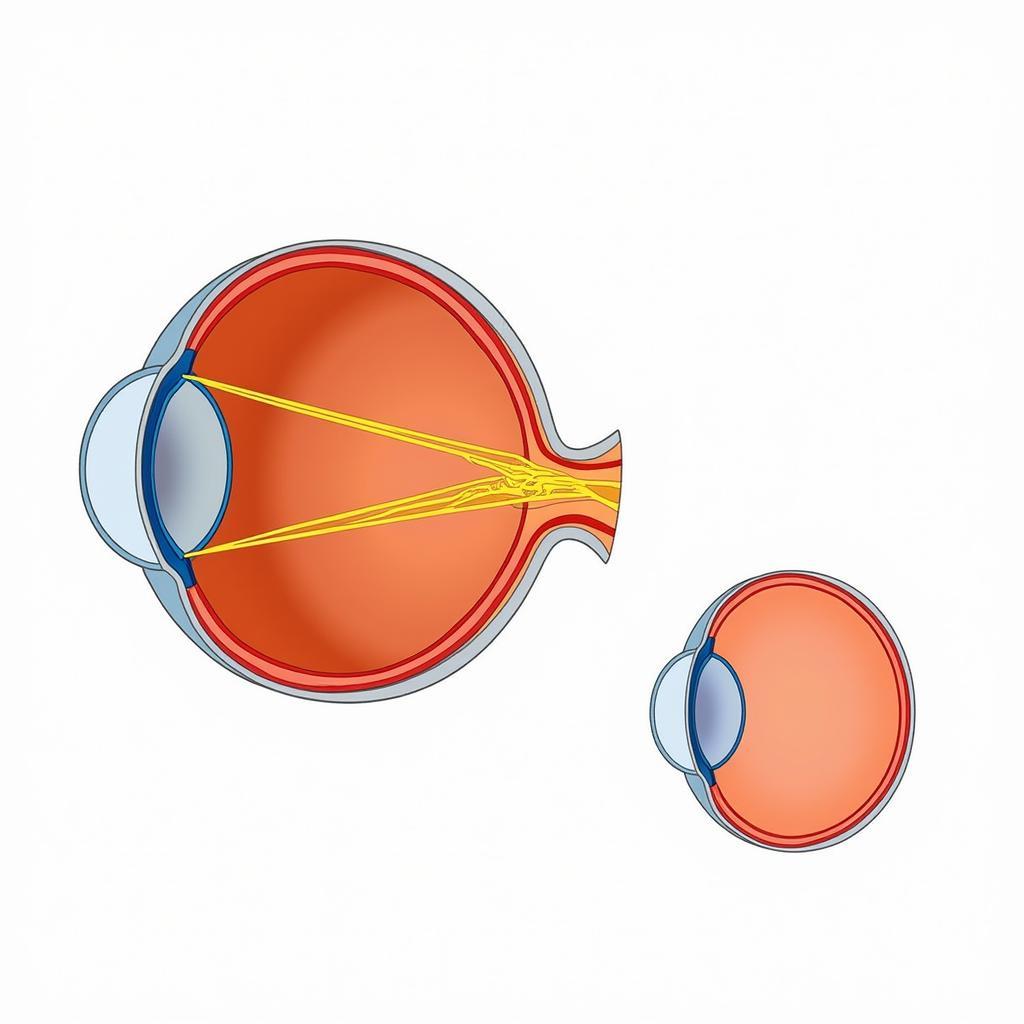Astigmatism, a common vision condition, causes blurred vision due to an irregularly shaped cornea or lens. Many people wonder if this irregularity also impacts their ability to see colors. This article explores the relationship between astigmatism and color perception, answering the question, Does Astigmatism Affect Color Perception?
Does astigmatism directly cause color blindness? Generally, no. Astigmatism primarily affects the clarity and sharpness of vision, not the ability to distinguish colors. It distorts light entering the eye, resulting in blurry or stretched-out images. While this blur can sometimes make it slightly harder to differentiate between very similar shades, it does not typically lead to true color blindness, where the ability to perceive certain colors is lost. Instead, astigmatism may subtly impact how vibrant or saturated colors appear. After astigmatism correction, some individuals report a slight enhancement in color vividness. This is likely due to the improved clarity and focus of their vision, allowing them to appreciate the full spectrum of colors.
Understanding Astigmatism and its Effects
Astigmatism occurs when the cornea or lens, responsible for focusing light onto the retina, has an uneven curvature. Instead of being perfectly spherical, it’s shaped more like a football. This irregular shape prevents light from focusing evenly on the retina, leading to blurred vision at all distances. Astigmatism can occur alongside other refractive errors like nearsightedness (myopia) and farsightedness (hyperopia).
 Astigmatism Eye Diagram Showing Irregular Cornea Shape
Astigmatism Eye Diagram Showing Irregular Cornea Shape
How Astigmatism Impacts Vision
The primary impact of astigmatism is blurred or distorted vision. This can affect both near and far vision, making activities like reading, driving, and watching television challenging. In addition to blurriness, astigmatism can cause eye strain, headaches, and squinting.
The Relationship between Astigmatism and Color Vision
While astigmatism itself doesn’t cause color blindness, the blurriness it creates can sometimes make it harder to differentiate subtle color variations. For example, someone with uncorrected astigmatism may have difficulty distinguishing between similar shades of blue and green. However, this is not true color blindness, as they can still perceive the full range of colors.
Can Astigmatism Correction Improve Color Perception?
Correcting astigmatism, typically with glasses, contact lenses, or refractive surgery, can significantly improve the clarity and sharpness of vision. This improved focus can enhance color perception by reducing the blurring that may have made it difficult to distinguish between similar shades. Learn more about whether LASIK can change your eye color at does lasik change your eye color. Some individuals report colors appearing more vivid after astigmatism correction. It’s important to understand, though, that this is not a change in color vision itself, but rather a result of the improved image quality. Consider exploring how how do color vision glasses work to gain additional insights. You might also be interested in knowing if can lasik change eye color.
Common Questions about Astigmatism and Color
1. Will astigmatism make me color blind? No, astigmatism does not cause color blindness.
2. Why do colors seem dull with astigmatism? Blurriness from astigmatism can make colors appear less vibrant. Correction can often improve color clarity.
3. Can I still get a driver’s license if I have astigmatism? Yes, astigmatism typically does not prevent someone from obtaining a driver’s license, as long as it is corrected to meet the required vision standards. If you’re curious about other vision-related career restrictions, you might want to learn about can you fly jets if you’re color blind.
4. How is astigmatism diagnosed? An eye doctor can diagnose astigmatism during a comprehensive eye exam. Wondering if does lasik change the color of your eyes?
5. What are the treatment options for astigmatism? Common treatments include eyeglasses, contact lenses, and refractive surgery.
Conclusion
Astigmatism primarily affects the clarity of vision, not color perception itself. While uncorrected astigmatism may subtly impact how we perceive the vibrancy and subtle differences between similar shades, it does not cause color blindness. Correcting astigmatism often leads to improved color clarity due to the sharper focus.
FAQ
- Does astigmatism affect night vision? (Yes, it can make lights appear streaked or haloed.)
- Can children have astigmatism? (Yes, astigmatism can occur at any age.)
- Is astigmatism hereditary? (Yes, there is a genetic component to astigmatism.)
- Can astigmatism worsen over time? (Yes, it can change over time, requiring adjustments to your prescription.)
- Are there exercises to improve astigmatism? (No, exercises cannot correct astigmatism, but treatment options are available.)
- Can I wear contact lenses for astigmatism? (Yes, specialized toric contact lenses are designed to correct astigmatism.)
- How often should I get my eyes checked for astigmatism? (Regular eye exams are recommended, typically every 1-2 years, or as advised by your eye doctor.)
Other related topics: Eye health, refractive errors, color blindness, LASIK surgery
Need support? Contact us at Phone: 0373298888, Email: [email protected], or visit us at 86 Cau Giay, Hanoi. We have a 24/7 customer support team.

